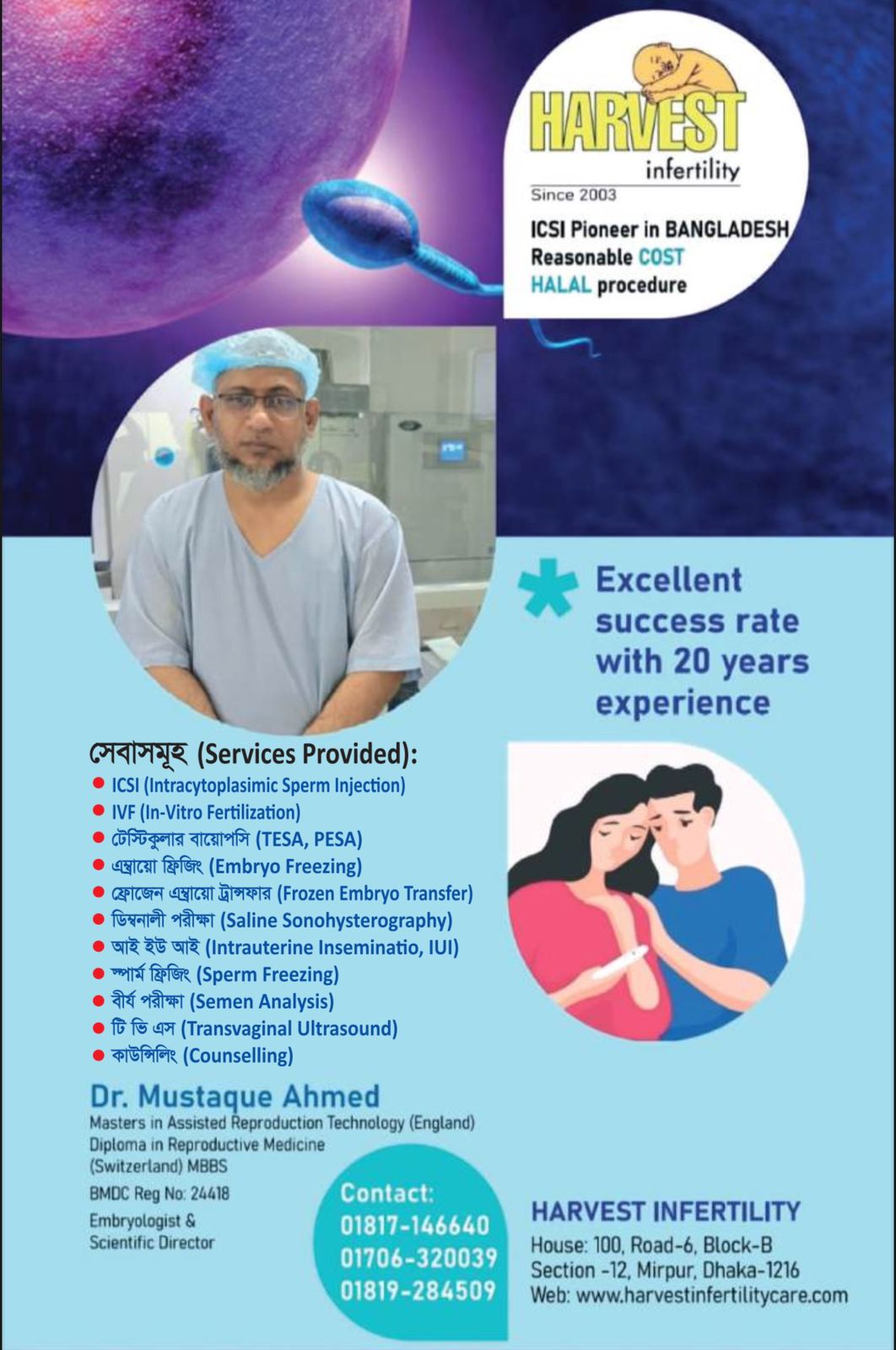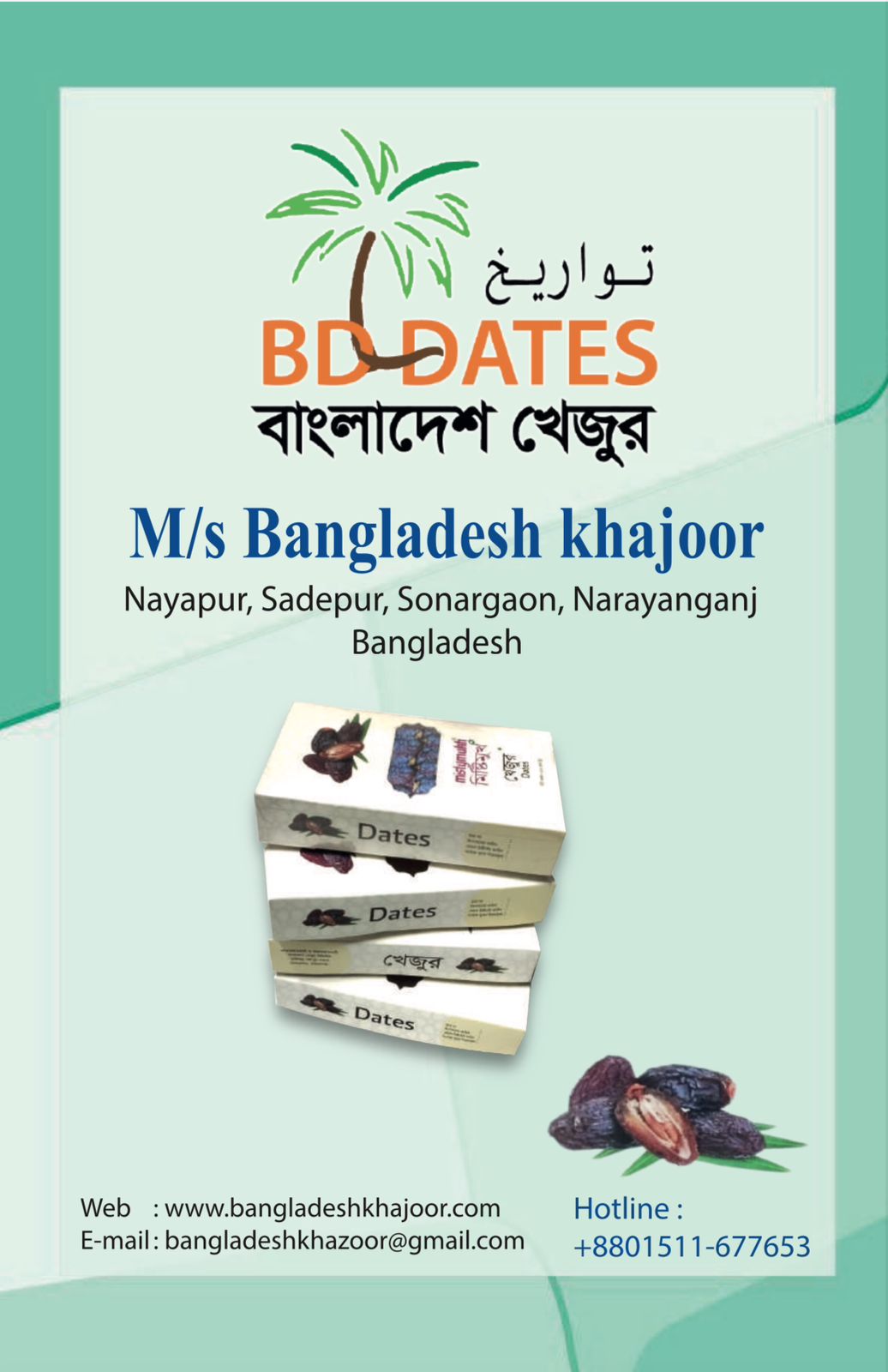Anticancer Activities of Nigella sativa (Black Cumin)
Anticancer Activities of Nigella sativa (Black Cumin)
– A Devine gift for a Cancer-free World
Md. Asaduzzaman Khan
Dept. of Biochemistry, School of Biological Sc. & Technology
Central South Univ., Changsha, Hunan 410013, P R China
The Research Center of Preclinical Medicine, South-west Medical Univ., Luzhou, Sichuan 646000, P R China
Life Member, NSSB
asadkhanbmj@yahoo.com
Han-chun Chen
Dept. of Biochemistry, School of Biological Sc. & Technology
Central South Univ., Changsha, Hunan 410013, P R China
chenhanchun@mail.csu.edu.cn
Mousumi Tania
Dept. of Biochemistry, School of Biological Sc. & Technology
Central South Univ., Changsha, Hunan 410013, P R China
Dianzheng Zhang
Dept. of Biochemistry/Molecular Biology,
Philadelphia College of Osteopathic Medicine, Philadelphia, PA 19131, USA
Abstract
The Black Cumin (Nigella sativa) has been used as traditional medicine for centuries. The crude oil and thymoquinone (TQ) extracted from its seeds and oil is effective against many diseases like cancer, cardiovascular complications, diabetes, asthma, kidney disease etc. It is effective against cancer in blood system, lung, kidney, liver, prostate, breast, cervix, skin with much safety. The molecular mechanisms behind its anticancer role is still not clearly understood, however, some studies showed that TQ has antioxidant role, and it improves body’s defense system; induces apoptosis and controls Akt pathway. Although the anti-cancer activity of N. sativa components was recognized thousands of years ago but proper scientific research with this important traditional medicine is a history of last 2-3 decades. There are not so many research works done with this important traditional medicine and very few reports exist in the scientific database. In this article, we have summarized the actions of TQ and crude oil of N. sativa against different cancers with their molecular mechanisms.
Key words: Traditional medicine, Nigella sativa, Thymoquinone, Antioxidant, Anti-cancer mechanism
Introduction
Cancer is one of the major threats of modern life, which is considered as the second cause of death after myocardial infarction (Grundy, 1991). Millions of people die every year in different types of cancer despite tremendous efforts to find methods of control and cure. In the last century great advances have made in modern medical science to control disease. But many diseases like cancers are not yet curable fully. To find out new and authentic therapies, scientists are working with traditional or folk medicines in parallel of modern medicine. Nigella sativa has been used for medicinal purposes for centuries. It has been originated from Southeastern Asia and also used in ancient Egypt, Greece, Middle East and Africa. In Islam, it is regarded as one of the greatest forms of healing medicine available (Nigella-sativa-research.com, 2010; Wikipedia, 2010). It is a flowering plant, of which seed is used as a spice. The seed is called black cumin in English, while in old Latin it was called as ‘Panacea’ meaning ‘cure all’; in Arabic it is termed as ‘Habbah Sawda’ or ‘Habbat el Baraka’ translated as ‘Seeds of blessing’. It is also known as ‘Kalo jeera’ (in Bangladesh), ‘Kalonji’ (in India) and ‘Hak Jung Chou’ in (China) (Aggarwal et al., 2008). Both seeds and oil extracted from this plant are used in medicinal purposes.
The active ingredients of N. sativa have beneficial effects against many diseases, including cancers. For example, it is effective in the diminishing the risk of atherosclerosis by decreasing the serum low density lipoprotein cholesterol level and increasing the serum high density lipoprotein cholesterol levels (Dahri et al., 2005; Nader et al., 2010); it exerts therapeutic and protective effect in diabetes by decreasing morphological changes and preserving pancreatic beta-cell integrity (Kanter et al., 2009) and by beneficially changing the hepatic enzyme activities (Pari and Sankaranarayanan, 2009); it is effective against hypertension (Khattab and Nagi, 2007; Dehkordi and Kamkhah, 2008); it has a potent antihistaminic effect on airways of asthmatic patients (Boskabady et al., 2010); its components are promising agents to complement Schistosomiasis specific treatment (El Shenawy et al., 2008); its oil protects kidney tissue against oxygen free radicals, preventing renal dysfunction and morphological abnormalities (Bayrak et al., 2008; Uz et al., 2008; Ragheb et al., 2009). For thousands of year, the seeds, oils and extracts of N. sativa have been used as an anticancer agent by Unani, Ayurveda and the Chinese system of medicine that have originated from the Arab, Ind-Bangla and China, respectively. The modern scientific research with the investigation of anticancer activity of N. sativa is comparatively recent affair (for the last 2-3 decades). There are not so many research works done in this field and very few review articles exist in this area. We have searched the scientific databases like Pubmed, Web of Science, and Google scholar and summarized the current scientific information about the anticancer activities of N. sativa with mechanisms of action.
Role of N. sativa as an anticancer agent
Many active ingredients have been found in the seeds of N. sativa. The seeds contain both fixed and essential oils, proteins, alkaloids and saponin (Ali and Blunden, 2003). Ghosheh et al. (1999) described the quantification of four pharmacologically important components: thymoquinone (TQ), dithymoquinone (DTQ), thymohydroquinone (THQ), and thymol (THY), in the oil of N. sativa seed by HPLC. Much of the biological activities of the seeds have been shown to be due to thymoquinone, the major component of the essential oil, which is also present in the fixed oil (Ali and Blunden, 2003). TQ is considered as potent anti-oxidant (Badary et al., 2003), anti-carcinogenic and anti-mutagenic agent (Bourgou et al., 2008; Khader et al., 2010) (structure of thymoquinone is shown in Figure 1a). Moreover, TQ is a relatively safe compound, particularly when given orally to experimental animals (Al-Ali et al., 2008). Alpha (α)-hederin, a pentacyclic triterpene saponin (structure: Figure 1b) isolated from the seeds of N. sativa, was also reported to have potent in vivo antitumor activity (Swamy and Huat, 2003).
Figure 1. Chemical structure of anti-tumor agents isolated from N. sativa.
(a) Thymoquinone (source: PubChem-CID 10281),
(b) Alpha-hederin (source: PubChem- CID 73296)

(a) Thymoquinone (source: PubChem-CID 10281)

(b) Alpha-hederin (source: PubChem- CID 73296)
Sativa seeds or oils or its active ingredients like TQ are effective against different cancers:
Blood Cancer
El-Mahdy et al. (2005) reported that TQ exhibits anti-proliferative effect in human myeloblastic leukemia HL-60 cells. Derivatives of TQ bearing terpene-terminated 6-alkyl residues were tested in HL-60 cells and 518A2 melanoma by Effenberger et al. (2010). They found the derivatives induce apoptosis associated with DNA laddering, a decrease in mitochondrial membrane potential, and a slight increase in reactive oxygen Species. Swamy and Huat (2003) observed that α-hederin also induced death of murine leukemia P388 cells by a dose- and time-dependent increase in apoptosis.
Breast Cancer
Aqueous and alcohol extracts of N. sativa were found to be effective in vitro in inactivating MCF-7 breast cancer cells (Farah and Begum, 2003). N. sativa, in combination with melatonin and retinoic acid reduced the carcinogenic effects of DMBA (7, 12-di-methylbenz(a)anthracene) in mammary carcinoma of rats (El-Aziz et al., 2005). Terpene-terminated 6-alkyl residues of TQ were tested in MCF-7/Topo breast carcinoma by Effenberger et al. (2010). They found the derivatives inducing cell death by apoptosis.
Colon Cancer
Gali-Muhtasib et al. (2004) suggested that TQ is anti-neoplastic and pro-apoptotic against colon cancer cell line HCT116. Salim and Fukushima (2003) demonstrated that the volatile oil of N. sativa has the ability to inhibit colon carcinogenesis of rats in the post-initiation stage, with no evident adverse side effects. Norwood et al. (2006) suggested TQ as chemotherapeutic agent on SW-626 colon cancer cells, in potency, which is similar to 5-flurouracil in action. However, on HT-29 (colon adenocarcinoma) cell, no effect of TQ was found (Rooney and Ryan, 2005).
Pancreatic Cancer
Chehl et al. (2009) showed that TQ, the major constituent of N. sativa oil extract, induced apoptosis and inhibited proliferation in PDA (pancreatic ductal adenocarcinoma) cells. They also suggested TQ as a novel inhibitor of pro-inflammatory pathways, which provides a promising strategy that combines anti-inflammatory and proapoptotic modes of action. TQ also can abrogate gemcitabine- or oxaliplatin-induced activation of NF-kappa B, resulting in the chemosensitization of pancreatic tumors to conventional therapeutics (Banerjee et al., 2009). The high molecular weight glycoprotein mucin 4 (MUC4) is aberrantly expressed in pancreatic cancer and contributes to the regulation of differentiation, proliferation, metastasis, and the chemoresistance of pancreatic cancer cells. Torres et al. (2010) evaluated the down-regulatory effect of TQ on MUC4 in pancreatic cancer cells. But in a study, Rooney and Ryan (2005) did not find any preventive role of TQ on MIA PaCa-2 (pancreas carcinoma) cells.
Hepatic Cancer
The cytotoxic activity of N. sativa seed was tested on the human hepatoma HepG2 cell line by Thabrew et al. (2005), and 88% inhibitory effect on HepG2 was found after 24-hour incubation with different concentrations (0-50 mg/ml) of the N. sativa extract. Nagi and Almakki (2009) reported that oral administration of TQ is effective in increasing the activities of quinone reductase and glutathione transferase and makes TQ a promising prophylactic agent against chemical carcinogenesis and toxicity in hepatic cancer
Lung Cancer
Swamy and Huat (2003) mentioned the antitumor activity of α-hederin from N. sativa against LL/2 (Lewis Lung carcinoma) in BANGLADESHF1 mice. Also, Mabrouk et al. (2002) showed that supplementation of diet with honey and N. sativa has a protective effect against MNU (methylnitrosourea)-induced oxidative stress, inflammatory response, and carcinogenesis in lung, skin and colon. However, Rooney and Ryan (2005) reported that α-hederin and TQ, the two principal bioactive constituents of N. sativa enhance neither cytotoxicity nor apoptosis in A549 (lung carcinoma), HEp-2 (larynx epidermoid carcinoma) cells.
Skin cancer
Topical application of N. sativa extract inhibited two-stage initiation / promotion [dimethylbenz [a] anthracene (DMBA)/croton oil] skin carcinogenesis in mice. Again, intraperitoneal administration of N. sativa (100 mg/kg body wt) 30 days after subcutaneous administration of MCA (20-methylcholanthrene) restricted soft tissue sarcomas to 33.3% compared with 100% in MCA-treated controls (Salomi et al., 1991).
Fibrosarcoma
TQ from N. sativa was administrated (0.01% in drinking water) one week before and after MCA treatment significantly inhibited the tumor incidence (fibrosarcoma) and tumor burden by 43% and 34%, respectively, compared with the results in the group receiving MCA alone. Moreover, TQ delayed the onset of MCA-induced fibrosarcoma tumors. Also in vitro studies showed that TQ inhibited the survival of fibrosarcoma cells with IC50 of 15 mM (Badary and Gamal, 2001). Oil of N. sativa also decreased the fibrinolytic potential of the human fibrosarcoma cell line (HT1080) in vitro (Awad, 2005).
Renal Cancer
Khan and Sultana (2005) reported the chemo-preventive effect of N. sativa against ferric nitrilotriacetate (Fe-NTA)-induced renal oxidative stress, hyper-proliferative response, and renal carcinogenesis. Treatment of rats orally with N. sativa (50 -100 mg/kg body wt) resulted in significant decrease in H2O2 generation, DNA synthesis, and incidence of tumors.
Prostate Cancer
TQ, from N. sativa, inhibited DNA synthesis, proliferation, and viability of cancerous (LNCaP, C4-B, DU145, and PC-3) but not non-cancerous (BPH-1) prostate epithelial cells by down-regulating AR (androgen receptor) and E2F-1 (a transcription factor) (Kaseb et al., 2007). In this study, they suggested TQ as effective in treating hormone-sensitive as well as hormone-refractory prostate cancer. Yi et al. (2008) found that TQ blocked angiogenesis in vitro and in vivo, prevented tumor angiogenesis in a xenograft human prostate cancer (PC3) model in mouse, and inhibited human prostate tumor growth at low dosage with almost no chemotoxic side effects. Furthermore, they observed that endothelial cells were more sensitive to TQ-induced cell apoptosis, cell proliferation, and migration inhibition compared with PC3 cancer cells. TQ also inhibited vascular endothelial growth factor-induced extracellular signal-regulated kinase activation but showed no inhibitory effects on vascular endothelial growth factor receptor 2 activation.
Cervical Cancer
Shafi et al. (2009) reported that methanol, n-Hexane, and chloroform extracts of N. sativa effectively killed HeLa (human epithelial cervical cancer) cells by inducing apoptosis. Effenberger et al. (2010) tested terpene-terminated 6-alkyl residues of TQ on multidrug-resistant KB-V1/Vb1 cervical carcinoma and found the derivatives inducing cell death by apoptosis.
Molecular mechanisms of N. sativa action against cancer
Cancers are the abnormal cell growth caused by genetic alteration. So, any agent which has anti-cancer activity, either protect genetic material from alteration or kill the genetically altered cancer cells. The active ingredients (mainly TQ) from N. sativa act on cancer cell to help to kill them by several molecular pathways.
El-Mahdy et al. (2005) suggested the apoptotic mechanisms behind the anti-proliferative effect of TQ (from N. sativa) on myeloblastic leukemia HL-60 cells. They reported that TQ induces apoptosis, disrupts mitochondrial membrane potential, and triggers the activation of caspases 8, 9 and 3 in HL-60 cells. The apoptosis induced by TQ was inhibited by a general caspase inhibitor, z-VAD-FMK; a caspase-3-specific inhibitor, z-DEVD-FMK; as well as a caspase-8-specific inhibitor, z-IETD-FMK. Moreover, the caspase-8 inhibitor blocked the TQ-induced activation of caspase-3, PARP cleavage and the release of cytochrome c from mitochondria into the cytoplasm. In addition, TQ treatment of HL-60 cells caused a marked increase in Bax/Bcl2 ratios due to upregulation of Bax and downregulation of Bcl2 proteins. Their results indicated that TQ-induced apoptosis is associated with the activation of caspases 8, 9 and 3, with caspase-8 acting as an upstream activator and activated caspase-8 initiates the release of cytochrome c during TQ-induced apoptosis. TQ action was also found as pro-apoptotic against colon cancer cell line HCT116 (Gali-Muhtasib et al., 2004). It was showed that the apoptotic effects of TQ are modulated by Bcl-2 protein and are linked to and dependent on p53. TQ also down-regulates the expression of NF-kappa B-regulated antiapoptotic (IAP1, IAP2, XIAP Bcl-2, Bcl-xL, and survivin) gene products (Sethi et al., 2008). Torres et al. (2010) found TQ inducing apoptosis by the activation of c-Jun NH(2)-terminal kinase and p38 mitogen-activated protein kinase pathways in pancreatic cancer cell.
TQ has also been reported to be active in controlling Akt pathway. Yi et al. (2008) found that TQ effectively inhibited human umbilical vein endothelial cell migration, invasion, and tube formation by suppressing the activation of AKT and extracellular signal-regulated kinase. Xuan et al. (2010) found that LPS (lipopolysaccharides: a bacterial component)-induced phosphorylation of prosurvival kinases Akt and ERK1/2 was abrogated by TQ in dendritic cells.
NF-kappa B plays a key role in regulating the immune response, and incorrect regulation of NF-kappa B has been found to be linked to cancer (Albensi and Mattson, 2000). Sethi et al. (2008) found that TQ suppressed tumor necrosis factor-induced NF-kappa B activation in a dose- and time-dependent manner and inhibited NF-kappa B activation induced by various carcinogens and inflammatory stimuli. The suppression of NF-kappa B activation is correlated with sequential inhibition of the activation of I kappa B alpha kinase, I kappa B alpha phosphorylation, I-kappa-B-alpha degradation, p65 phosphorylation, p65 nuclear translocation, and the NF-kappa B-dependent reporter gene expression. Also Oberg et al. (2009) reported that a herbal melanin (HM) from N. sativa modulates cytokine production and suggested it as a ligand for TLR4 (toll-like receptor 4). They investigated the possibility that the HM-induced cytokine production is via an NF-kappa B signaling pathway and found that HM induced the degradation of I kappa B-alpha, a key step in the activation of NF-kappa B. Moreover, addition of I kappa B kinase (IKK) specific inhibitors effectively inhibited the observed HM-induced production of IL-8 and IL-6 by TLR4-transfected HEK293 (embryonic kidney 293) cells and THP-1 (Human acute monocytic leukemia) cells (Oberg et al., 2009).
Many studies showed that N. sativa oil or TQ has antioxidant activity and increases the activities of antioxidant enzymes such as superoxide dismutase (SOD), catalase (CAT) glutathione peroxidase (GPx) etc (Ebru et al., 2008; Barron et al., 2008; Ismail et al., 2010). And antioxidant enzymes are clearly related to cancer- mostly their increased activities are beneficial against different types of cancer (Khan et al., 2010). Administration of N. sativa oil or TQ can lower the toxicity of other anti-cancer drugs. In addition to these cancer inhibiting properties, components of N. sativa have cancer protective roles. Ibrahim et al. (2008) reported that N. sativa oil administration has a protective effect against the CCl4-mediated suppression of CYP (drug-metabolizing cytochrome P450 enzymes). And genetic abnormalities and polymorphisms of CYP enzymes are associated with cancer (Sim and Ingelman-Sundberg, 2006; Chen et al., 2008). Radiotherapy is one of the most common strategies for treating human cancers but this treatment is somehow risky for normal tissue. Cemek et al. (2006) showed that N. sativa and glutathione treatment significantly antagonize the effects of radiation. Therefore, N. sativa may be a beneficial agent in protection against ionizing radiation-related tissue injury. Assayed (2010) investigated the radio-protective potential of N. sativa crude oil against hemopoietic adverse effects of gamma irradiation. He found that irradiation resulted in significant reduction in hemolysin antibodies titers and delayed type hypersensitivity reaction of irradiated rats, in addition to significant leukopenia and significant decrease in plasma total protein and globulin concentration and depletion of lymphoid follicles of spleen and thymus gland. Furthermore, there was a significant increase in malondialdehyde concentration with a significant decrease in plasma GPx, CAT and erythrocyte SOD activities. But oral administration of N. sativa oil before irradiation considerably normalized all the above-mentioned criteria; and produced significant regeneration in spleen and thymus lymphoid follicles. Thus N. sativa oil is recognized as a promising natural radio-protective agent against immunosuppressive and oxidative effects of ionizing radiation.

Figure 1: Possible mechanisms of thymoquinone (TQ) action
(1) TQ induces apoptotic cell death in cancerous tissues by up-regulating expression of apoptotic genes (caspases and bax) and down-regulating expression of anti-apoptotic genes (e.g., bcl 2); (2) TQ suppresses Akt activation by dephosphorylation and thus blocks cancer cell survival; (3) TQ deactivates NF-kappa B pathway by inducing cytokine production, and thus control oncogenic expression; (4) TQ increases the activities of antioxidant enzymes and protects cell against cancer; (5) TQ protects normal cells’ injury caused by ionizing radiation in the treatment of cancer; (6) TQ prevents CYP450 enzymes from damage. ‘+’ indicates increasing effect and ‘-’ indicates decreasing effect.
Concluding remarks
The anti-cancer activities of N. sativa components were recognized thousands of years ago but proper scientific research with this important traditional medicine is a very recent story. More research works should be emphasized behind this because it is a safe and promising anticancer agent. Specially, researchers should investigate the active ingredients more broadly, because, there is very few authentic reports about the chemical composition of seeds or oil of N. sativa exist. Also, the exact molecular mechanisms of thymoquinone and other components on different cancers should be investigated with more emphasize because current understandings are mostly unclear. For example, it is reported that N. sativa oil can protect cells from radiation, but the molecular mechanisms behind this is not properly understood. Currently, in some parts of the world, there is a renaissance of interest in traditional remedies. Many investigators now believe that traditional medicine is a promising source of new therapeutics against cancer. Extensive research with N. sativa may contribute to the discovery of new anticancer strategies.
[This article was first published in Afr J Tradit Complement Altern Med. (2011) 8(S):226-232]
References
1. Aggarwal, B.B., Kunnumakkara, A.B., Harikumar, K.B., Tharakan, S.T., Sung, B. and Anand, P. (2008). Potential of spice-derived phytochemicals for cancer prevention. Planta Med., 74: 1560-1569.
2. Al-Ali, A., Alkhawajah, A.A., Randhawa, M.A. and Shaikh, N.A. (2008). Oral and intraperitoneal LD50 of thymoquinone, an active principle of Nigella sativa, in mice and rats. J. Ayub. Med. Coll. Abbottabad., 20: 252-257.
3. Albensi, B.C. and Mattson, M.P. (2000). Evidence for the involvement of TNF and NF-kappaB in hippocampal synaptic plasticity. Synapse, 35: 151-159.
4. Alenzi, F.Q., El-Bolkiny, Yel.-S. and Salem, M.L. (2010). Protective effects of Nigella sativa oil and thymoquinone against toxicity induced by the anticancer drug cyclophosphamide. Br. J. Biomed. Sci., 67: 20-28.
5. Ali, B.H. and Blunden, G. (2003). Pharmacological and toxicological properties of Nigella sativa. Phytother. Res., 17: 299-305.
6. Assayed, M.E. (2010). Radioprotective effects of black seed (Nigella sativa) oil against hemopoietic damage and immunosuppression in gamma-irradiated rats. Immunopharmacol. Immunotoxicol., 32: 284-296.
7. Awad, E.M. (2005). In vitro decreases of the fibrinolytic potential of cultured human fibrosarcoma cell line, HT1080, by Nigella sativa oil. Phytomedicine, 12: 100-107.
8. Badary, O.A. and Gamal El-Din, A.M. (2001). Inhibitory effects of thymoquinone against 20-methylcholanthrene-induced fibrosarcoma tumorigenesis. Cancer Detect. Prev., 25: 362-368.
9. Badary, O.A., Taha, R.A., Gamal el-Din, A.M. and ABangladeshel-Wahab, M.H. (2003). Thymoquinone is a potent superoxide anion scavenger. Drug Chem. Toxicol., 26: 87-98.
10. Banerjee, S., Kaseb, A.O., Wang, Z., Kong, D., Mohammad, M., Padhye, S., Sarkar, F.H. and Mohammad, R.M. (2009). Antitumor activity of gemcitabine and oxaliplatin is augmented by thymoquinone in pancreatic cancer. Cancer Res., 69: 5575-5583.
11. Barron, J., Benghuzzi, H. and Tucci, M. (2008). Effects of thymoquinone and selenium on the proliferation of mg 63 cells in tissue culture. Biomed. Sci. Instrum., 44: 434-440.
12. Bayrak, O., Bavbek, N., Karatas, O.F., Bayrak, R., Catal, F., Cimentepe, E., Akbas, A., Yildirim, E., Unal, D. and Akcay, A. (2008). Nigella sativa protects against ischaemia/reperfusion injury in rat kidneys. Nephrol. Dial. Transplant., 23: 2206-2212.
13. Bourgou, S., Ksouri, R., Bellila, A., Skandrani, I., Falleh, H. and Marzouk, B. (2008). Phenolic composition and biological activities of Tunisian Nigella sativa L. shoots and roots. C. R. Biol., 331: 48-55.
14. Boskabady, M.H., Mohsenpoor, N. and Takaloo, L. (2010). Antiasthmatic effect of Nigella sativa in airways of asthmatic patients. Phytomedicine, 17: 707-713
15. Cemek, M., Enginar, H., Karaca, T. and Unak, P. (2006). In vivo radioprotective effects of Nigella sativa L oil and reduced glutathione against irradiation-induced oxidative injury and number of peripheral blood lymphocytes in rats. Photochem. Photobiol., 82: 1691-1696.
16. Chehl, N., Chipitsyna, G., Gong, Q., Yeo, C.J. and Arafat, H.A. (2009). Anti-inflammatory effects of the Nigella sativa seed extract, thymoquinone, in pancreatic cancer cells. HPB (Oxford), 11: 373-381.
17. Chen, H.C., Hu, W.X., Liu, Q.X., Li, W.K., Chen, F.Z., Rao, Z.Z., Liu, X.F., Luo, Y.P. and Cao, Y.F. (2008). Genetic polymorphisms of metabolic enzymes CYP1A1, CYP2D6, GSTM1 and GSTT1 and leukemia susceptibility. Eur. J. Cancer Prev., 17: 251-258.
18. Dahri, A.H., Chandiol, A.M., Rahoo, A.A. and Memon, R.A. (2005). Effect of Nigella sativa (kalonji) on serum cholesterol of albino rats. J. Ayub. Med. Coll. Abbottabad., 17: 72-74.
19. Dehkordi, F.R. and Kamkhah, A.F. (2008). Antihypertensive effect of Nigella sativa seed extract in patients with mild hypertension. Fundam. Clin. Pharmacol., 22: 447-452.
20. Ebru, U., Burak, U., Yusuf, S., Reyhan, B., Arif, K., Faruk, T.H., Emin, M., Aydin, K., Atilla, I.I., Semsettin, S. and Kemal, E. (2008). Cardioprotective effects of Nigella sativa oil on cyclosporine A-induced cardiotoxicity in rats. Basic Clin. Pharmacol. Toxicol., 103: 574-580.
21. Effenberger, K., Breyer, S. and Schobert, R. (2010). Terpene conjugates of the Nigella sativa seed-oil constituent thymoquinone with enhanced efficacy in cancer cells. Chem. Biodivers., 7: 129-139.
22. El-Aziz, M.A., Hassan, H.A., Mohamed, M.H., Meki, A.R., ABangladeshel-Ghaffar, S.K. and Hussein, M.R. (2005). The biochemical and morphological alterations following administration of melatonin, retinoic acid and Nigella sativa in mammary carcinoma: an animal model. Int. J. Exp. Pathol., 86: 383-396.
23. El-Mahdy, M.A., Zhu, Q., Wang, Q.E., Wani, G. and Wani, A.A. (2005). Thymoquinone induces apoptosis through activation of caspase-8 and mitochondrial events in p53-null myeloblastic leukemia HL-60 cells. Int. J. Cancer, 117: 409-417.
24. EI Shenawy, N.S., Soliman, M.F. and Reyad, S.I. (2008). The effect of antioxidant properties of aqueous garlic extract and Nigella sativa as anti-schistosomiasis agents in mice. Rev. Inst. Med. Trop. Sao. Paulo., 50: 29-36.
25. Farah, I.O. and Begum, R.A. (2003). Effect of Nigella sativa (N. sativa L.) and oxidative stress on the survival pattern of MCF-7 breast cancer cells. Biomed. Sci. Instrum., 39: 359-364.
26. Gali-Muhtasib, H., Diab-Assaf, M., Boltze, C., Al-Hmaira, J., Hartig, R., Roessner, A. and Schneider-Stock, R. (2004). Thymoquinone extracted from black seed triggers apoptotic cell death in human colorectal cancer cells via a p53-dependent mechanism. Int. J. Oncol., 25: 857-866.
27. Ghosheh, O.A., Houdi, A.A. and Crooks, P.A. (1999). High performance liquid chromatographic analysis of the pharmacologically active quinones and related compounds in the oil of the black seed (Nigella sativa L.). J. Pharm. Biomed. Anal., 19: 757-762.
28. Grundy, S.M. (1991). Recent nutrition research: implications for foods of the future. Ann. Med., 23: 187-193.
29. Ibrahim, Z.S., Ishizuka, M., Soliman, M., ElBohi, K., Sobhy, W., Muzandu, K., Elkattawy, A.M., Sakamoto, K.Q. and Fujita, S. (2008). Protection by Nigella sativa against Carbon tetrachloride-induced downregulation of hepatic cytochrome P450 isozymes in rats. Jpn. J. Vet. Res., 56: 119-128.
30. Ismail, M., Al-Naqeep, G. and Chan, K.W. (2010). Nigella sativa thymoquinone-rich fraction greatly improves plasma antioxidant capacity and expression of antioxidant genes in hypercholesterolemic rats. Free Radic. Biol. Med., 48: 664-672.
31. Kanter, M., Akpolat, M. and Aktas, C. (2009). Protective effects of the volatile oil of Nigella sativa seeds on beta-cell damage in streptozotocin-induced diabetic rats: a light and electron microscopic study. J. Mol. Histol., 40: 379-385.
32. Kaseb, A.O., Chinnakannu, K., Chen, D., Sivanandam, A., Tejwani, S., Menon, M., Dou, Q.P. and Reddy, G.P. (2007). Androgen receptor and E2F-1 targeted thymoquinone therapy for hormone-refractory prostate cancer. Cancer Res., 67: 7782-7788.
33. Khader, M., Bresgen, N. and Eckl, P.M. (2010). Antimutagenic effects of ethanolic extracts from selected Palestinian medicinal plants. J. Ethnopharmacol., 127: 319-324.
34. Khan, M.A., Tania, M., Zhang, D.Z. and Chen, H.C. (2010). Antioxidant enzymes and cancer. Chin. J. Cancer Res., 22: 87-92.
35. Khan, N. and Sultana, S. (2005). Inhibition of two stage renal carcinogenesis, oxidative damage and hyperproliferative response by Nigella sativa. Eur. J. Cancer Prev., 14: 159-168.
36. Khattab, M.M. and Nagi, M.N. (2007). Thymoquinone supplementation attenuates hypertension and renal damage in nitric oxide deficient hypertensive rats. Phytother. Res., 21: 410-414.
37. Mabrouk, G.M., Moselhy, S.S., Zohny, S.F., Ali, E.M., Helal, T.E., Amin, A.A. and Khalifa, A.A. (2002). Inhibition of methylnitrosourea (MNU) induced oxidative stress and carcinogenesis by orally administered bee honey and Nigella grains in Sprague Dawely rats. J. Exp. Clin. Cancer Res., 21: 341-346.
38. Nader, M.A., el-Agamy, D.S. and Suddek, G.M. (2010). Protective effects of propolis and thymoquinone on development of atherosclerosis in cholesterol-fed rabbits. Arch. Pharm. Res., 33: 637-643.
39. Nagi, M.N. and Almakki, H.A. (2009). Thymoquinone supplementation induces quinone reductase and glutathione transferase in mice liver: possible role in protection against chemical carcinogenesis and toxicity. Phytother. Res., 23: 1295-1298.
40. Nigella-sativa-research.com (2010). Nigella Sativa – History & Origins;. Available at: http://nigella-sativa-research.com/?page_id=41. Accessed February, 03, 2010.
41. Norwood, A.A., Tan, M., May, M., Tucci, M. and Benghuzzi, H. (2006). Comparison of potential chemotherapeutic agents, 5-fluoruracil, green tea, and thymoquinone on colon cancer cells. Biomed. Sci. Instrum., 42: 350-356.
42. Oberg, F., Haseeb, A., Ahnfelt, M., Pontén, F., Westermark, B. and El-Obeid, A. (2009). Herbal melanin activates TLR4/NF-kappaB signaling pathway. Phytomedicine, 16: 477-484.
43. Pari, L. and Sankaranarayanan, C. (2009). Beneficial effects of thymoquinone on hepatic key enzymes in streptozotocin-nicotinamide induced diabetic rats. Life Sci., 85: 830-834.
44. Ragheb, A., Attia, A., Eldin, W.S., Elbarbry, F., Gazarin, S. and Shoker, A. (2009). The protective effect of thymoquinone, an anti-oxidant and anti-inflammatory agent, against renal injury: a review. Saudi J. Kidney Dis. Transpl., 20: 741-752.
45. Rooney, S. and Ryan, M.F. (2005). Modes of action of alpha-hederin and thymoquinone, active constituents of Nigella sativa, against HEp-2 cancer cells. Anticancer Res., 25: 4255-4259.
46. Salim, E.I. and Fukushima, S. (2003). Chemopreventive potential of volatile oil from black cumin (Nigella sativa L.) seeds against rat colon carcinogenesis. Nutr. Cancer, 45: 195-202.
47. Salomi, M.J., Nair, S.C. and Panikkar, K.R. (1991). Inhibitory effects of Nigella sativa and saffron (Crocus sativus) on chemical carcinogenesis in mice. Nutr. Cancer, 16: 67-72.
48. Sethi, G., Ahn, K.S. and Aggarwal, B.B. (2008). Targeting nuclear factor-kappa B activation pathway by thymoquinone: role in suppression of antiapoptotic gene products and enhancement of apoptosis. Mol. Cancer Res., 6: 1059-1070.
49. Shafi, G., Munshi, A., Hasan, T.N., Alshatwi, A.A., Jyothy, A. and Lei, D.K. (2009). Induction of apoptosis in HeLa cells by chloroform fraction of seed extracts of Nigella sativa. Cancer Cell Int., 9: 29-36.
50. Sim, S.C. and Ingelman-Sundberg, M. (2006). The human cytochrome P450 Allele Nomenclature Committee Web site: submission criteria, procedures, and objectives. Methods Mol. Biol., 320: 183-191.
51. Swamy, S.M. and Huat, B.T. (2003). Intracellular glutathione depletion and reactive oxygen Species generation are important in alpha-hederin-induced apoptosis of P388 cells. Mol. Cell Biochem., 24: 127-139.
52. Thabrew, M.I., Mitry, R.R., Morsy, M.A. and Hughes, R.D. (2005). Cytotoxic effects of a decoction of Nigella sativa, Hemidesmus indicus and Smilax glabra on human hepatoma HepG2 cells. Life Sci., 77: 1319-1330.
53. Torres, M.P., Ponnusamy, M.P., Chakraborty, S., Smith, L.M., Das, S., Arafat, H.A. and Batra, S.K. (2010). Effects of Thymoquinone in the Expression of Mucin 4 in Pancreatic Cancer Cells: Implications for the Development of Novel Cancer Therapies. Mol. Cancer Ther., 9: 1419-1431.
54. Uz, E., Bayrak, O., Uz, E., Kaya, A., Bayrak, R., Uz, B., Turgut, F.H., Bavbek, N., Kanbay, M. and Akcay, A. (2008). Nigella sativa oil for prevention of chronic cyclosporine nephrotoxicity: an experimental model. Am. J. Nephrol., 28: 517-522.
55. Wikipedia: The free encyclopedia. (2010). Nigella Sativa;. Available at: http://en.wikipedia.org/wiki/Nigella_sativa. Accessed April, 03, 2010.
56. Xuan, N.T., Shumilina, E., Qadri, S.M., Götz, F. and Lang, F. (2010). Effect of thymoquinone on mouse dendritic cells. Cell Physiol. Biochem., 25: 307-314.
57. Yi, T., Cho, S.G., Yi, Z., Pang, X., Rodriguez, M., Wang, Y., Sethi, G., Aggarwal, B.B. and Liu, M. (2008). Thymoquinone inhibits tumor angiogenesis and tumor growth through suppressing AKT and extracellular signal-regulated kinase signaling pathways. Mol. Cancer Ther., 7: 1789-1796.
















